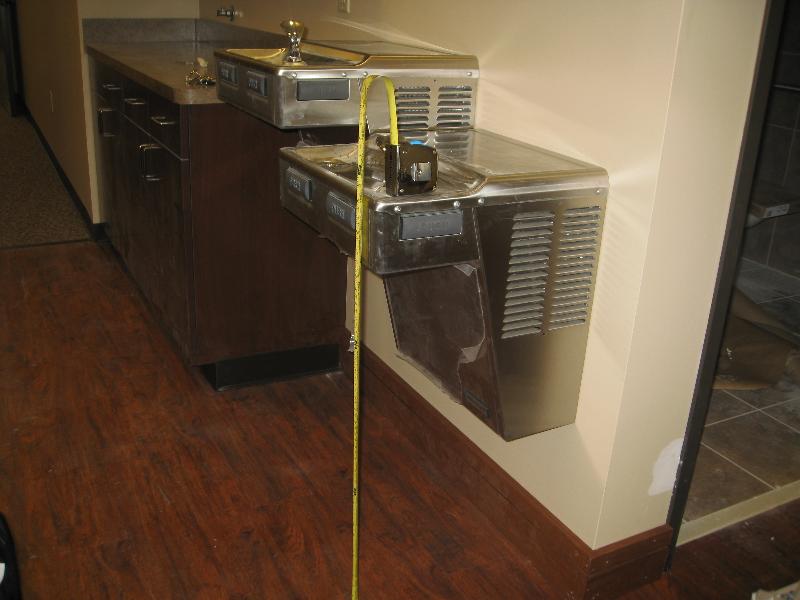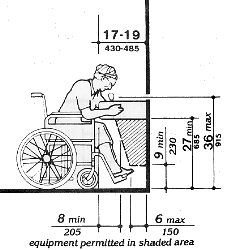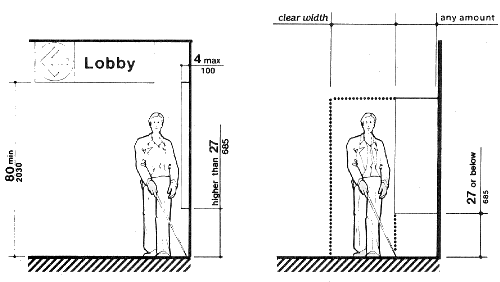Here is an article by my friend and colleague Wally Tirado wally@nortexcode.com
Wally Tirado is a Principal Consultant with NORTEX Code, LLC. NORTEX Code, LLC provides building code consulting throughout Texas. He is a Registered Accessibility Specialist, Certified Accessibility Inspector/Plans Examiner, and a life member of the Disabled American Veterans.
Understanding the Safe Harbor Provision of the ADA
On September 15, 2010, as part of the celebration of the 20th Anniversary of the Americans with Disability Act, the Department of Justice (DOJ) published the “2010 ADA Standards for Accessible Design” (2010 Standards). The 2010 Standards become mandatory on March 15, 2012. A safe harbor provision was included within those standards.
According to Merriam-Webster’s Dictionary of Law, a safe harbor is a provision that reduces a party’s liability by providing protection on the condition that party performed its action in good faith or in compliance with defined standards. The 2010 Standards retains the safe harbor for required elements of a path of travel to altered primary function areas for private entities that already have complied with the 1991 Standards with respect to those required elements. With respect to an alteration of a facility, the primary function is a major activity for which the facility is intended.
So if your facility was built or altered in the past 20 years to become complaint with the 1991 Standards, you do not have to make further changes to those elements; even though the new standards have different requirements. This provision is applied on an element-by-element basis and is referred to as the “safe harbor.” The following is an example on how the safe harbor could apply:
The 2010 Standards lower the mounting height for light switches and thermostats from 54 inches to 48 inches. However, if your light switches are already installed at 54 inches in compliance with the 1991 Standards, you are not required to lower them to 48 inches.
According to the standards, if an entity has constructed or altered required elements of a path of travel in accordance with the specifications in either the 1991 ADA Standards or the Uniform Federal Accessibility Standards before March 15, 2012, the public entity is not required to retrofit such elements to reflect incremental changes in the 2010 Standards solely because of an alteration to a primary function area served by that path of travel.
It is believed that the safe harbor provision strikes a balance between ensuring that persons with disabilities are provided access to facilities and potential financial burdens on building owners that are undertaking alterations subject to the 2010 Standards.
Element by Element Safe Harbor
The DOJ sought to diminish the cost of design changes by adopting a “safe harbor” under which existing building elements that already complies with the 1991 Standards would not be required to be brought into compliance with the 2010 Standards until the elements were subject to a planned alteration.
What this safe harbor provision is not however is a blanket exemption for facilities. If a private entity undertakes an alteration to a primary function area, only the required elements of a path of travel to that area that already comply with the 1991 Standards are subject to the safe harbor.
If a private entity undertakes an alteration to a primary function area and the required elements of a path of travel to the altered area do not comply with the 1991 Standards, then the entity must bring those elements into compliance with the 2010 Standards.
Where Safe Harbor Does Not Apply
If you choose to alter elements that were in compliance with the 1991 Standards, then safe harbor no longer applies to those elements. For example, if you restripe your parking lot, which is considered an alteration, you will now have to meet the ratio of van accessible spaces in the 2010 Standards. Similarly, if you relocate a fixed ATM, which is considered an alteration, you will now have to meet the keypad requirements in the 2010 Standards.
Additionally, the 2010 Standards contain new requirements for elements in existing facilities that were not previously addressed in the original 1991 Standards. These include the elements of recreation facilities such as swimming pools, play areas and exercise machines. Since those elements were not included in the 1991 Standards, they are not subject to the safe harbor. Therefore, on or after March 15, 2012, public accommodations must remove architectural barriers to elements subject to the new requirements in the 2010 Standards when it is readily achievable to do so. The following is a short list of the some of the facilities that are new to the 2010 Standards and not subject to the safe harbor provision:
- Amusement rides
- Recreational boating facilities
- Exercise machines and equipment
- Fishing piers and platforms
- Golf facilities
- Miniature golf facilities
- Play areas
- Saunas and steam rooms
- Swimming pools, wading pools, and spas
- Shooting facilities with firing positions
- Residential facilities and dwelling units
While the updated standards may seem like just another layer of government interference, the new standards provide new guidance for enhancing facility access. The safe harbor provision when used appropriately, can keep from undoing the good you have already done.
Always, keep in mind that the when undertaking any renovation, new construction, or alterations to your facility, consult your state and local codes, your architect, contractor, and an accessibility consultant. Ultimately, have a willingness to comply and recognize its value from the onset and it will have a positive effect on any organization.
 Abadi
Abadi 



